
Taddeo Zuccaro was an Italian painter, one of the most popular members of the Roman mannerist school.

Giorgio Vasari was an Italian painter, architect, writer, and historian, best known for his Lives of the Most Excellent Painters, Sculptors, and Architects, considered the ideological foundation of art-historical writing. He was also the first to use the term "Renaissance" in print.

The Apostolic Palace is the official residence of the pope, the head of the Catholic Church, located in Vatican City. It is also known as the Papal Palace, the Palace of the Vatican and the Vatican Palace. The Vatican itself refers to the building as the Palace of Sixtus V, in honor of Pope Sixtus V, who built most of the present form of the palace.

Palazzo Farnese or Farnese Palace is one of the most important High Renaissance palaces in Rome. Owned by the Italian Republic, it was given to the French government in 1936 for a period of 99 years, and currently serves as the French embassy in Italy.
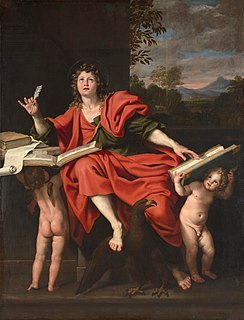
Domenico Zampieri, known by the diminutive Domenichino after his shortness, was an Italian Baroque painter of the Bolognese School of painters.

Francesco Albani or Albano was an Italian Baroque painter who was active in Bologna (1591–1600), Rome (1600–1609), Bologna (1609), Viterbo (1609–1610), Bologna (1610), Rome (1610–1617), Bologna (1618–1660), Mantova (1621–1622), Roma (1623–1625) and Florence (1633).

Spinello Aretino was an Italian painter from Arezzo, who was active in Tuscany at the end of the 14th and the first decennium of the 15th century. His style influenced the development of late 14th- and early 15th-century painting in Tuscany.

Pellegrino Tibaldi, also known as Pellegrino di Tibaldo de Pellegrini, was an Italian mannerist architect, sculptor, and mural painter.
Giovanni Lanfranco was an Italian painter of the Baroque period.
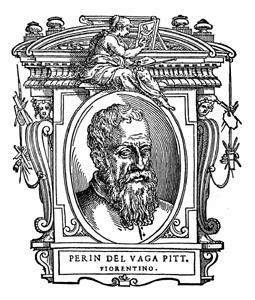
Perinodel Vaga was an Italian painter and draughtsman of the Late Renaissance/Mannerism.

Carlo Maratta or Maratti was an Italian painter, active mostly in Rome, and known principally for his classicizing paintings executed in a Late Baroque Classical manner. Although he is part of the classical tradition stemming from Raphael, he was not exempt from the influence of Baroque painting and particularly in his use of colour. His contemporary and friend, Giovanni Bellori, wrote an early biography on Maratta.

Marcantonio Franceschini was an Italian painter of the Baroque period, active mostly in his native Bologna. He was the father and teacher of Giacomo Franceschini.

Tommaso Laureti, often called Tommaso Laureti Siciliano, was an Italian painter from Sicily who trained in the atelier of the aged Sebastiano del Piombo and worked in Bologna. From 1582, he worked for papal patrons in Rome in a Michelangelo-inspired style with special skill in illusionistic perspective, that in his Roman work avoided all but traces of Mannerism.

Jacopo Bertoia, also known as Giacomo Zanguidi or Jacopo Zanguidi or Bertoja,, was an Italian painter of a late-Renaissance or Mannerist style that emerged in Parma towards the end of the 16th century.
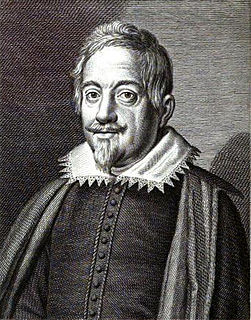
Antonio Tempesta, also called il Tempestino, was an Italian painter and engraver, whose art acted as a point of connection between Baroque Rome and the culture of Antwerp.

Cesare Nebbia (c.1536–c.1622) was an Italian painter from Orvieto who painted in a Mannerist style.
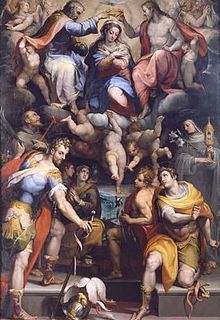
Orazio Samacchini was an Italian painter of the late-Renaissance and Mannerist style, active in Rome, Parma, and his native city.
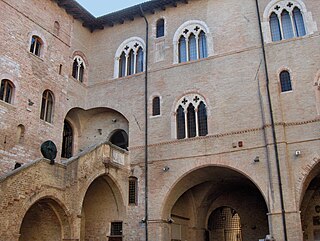
The Trinci Palace is a patrician residence in the center of Foligno, central Italy. It houses an archaeological museum, the city's picture gallery, a multimedia museum of Tournaments and Jousts and the Civic Museum.

Francesco Manno was an Italian painter and architect. Born at Palermo in 1754, he was originally a goldsmith, but later devoted himself to painting. In 1786 he settled at Rome, working in the studio of Francesco Preziado de la Vega. Manno became the Secretary of the Accademia di San Luca. On 13 July 1794 he became a member of the Accademia dei Virtuosi del Pantheon. Favored by Pope Pius VI, Manno was appointed Painter of the Sacred Apostolic Buildings in 1800. He died in Rome in 1831.
Filippo Pedrini was an Italian painter.


















